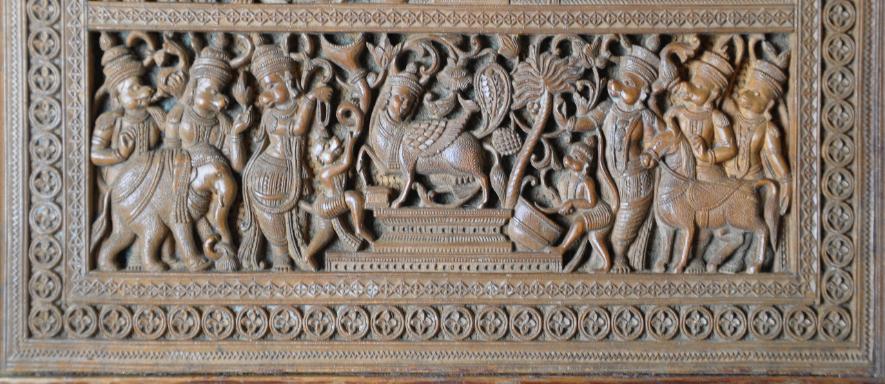
Mysore Sandalwood Bookcovers
Finely Carved Sandalwood Bible Covers with Silver Mounts
Mysore, South India
circa 1860
height: 36.5cm, width: 33cm, thickness: 7.8cm
This large pair of highly ornate sandalwood covers are of dimensions sizeable enough to encase a large family heirloom bible, popular among middle and upper class British families throughout the ages. The wood, which is still highly fragrant, is among the best carved examples of Mysore work that we have seen, published or otherwise. The front cover is intricately carved all over with gods and consorts, supplicants and devotees. The detail and the fineness of the work is extraordinary. The spine is similarly carved. The back cover has been left largely plain other than for a roundel carved with a hamsa or sacred goose.
The covers have fine Mysore silver mounts, and a silver latch to keep the covers closed. The silver is finely repoussed with Sooth Indian leaf, flower and double-headed eagle motifs. The double-headed eagle (ganda bherunda) is the emblem of the Wodiyer Dynasty, the Hindu dynasty that ruled the Kingdom of Mysore from 1399 to 1947, until the independence of India from British rule. The presence of this symbol need not mean that the covers were commissioned by the Wodiyers but more likely was employed as an artistic device, suggesting the quality of the covers.
A cover of similar size and fineness but lacking the silver mounts comprised lot 106 of Christie’s London ‘Art of India’ sale, September 27, 2001.
Mysore (along with Canara) specialised in sandalwood carving. The craftsmen were known as gudigars and they were hereditary artisans who are believed to have originally migrated from Goa in the early sixteenth century to avoid conversion to Christianity by the Portuguese.
There are no losses to the carving, and no repairs. There is some wood shrinkage to the panels as to be expected. The manner of construction has allowed for shrinkage and consequently, there are no splits.
References
Jaffer, A., Furniture from British India and Ceylon: A Catalogue of the Collections in the Victoria and Albert Museum and the Peabody Essex Museum, Timeless Books, 2001.
Provenance
UK art market
Inventory no.: 2481
SOLD




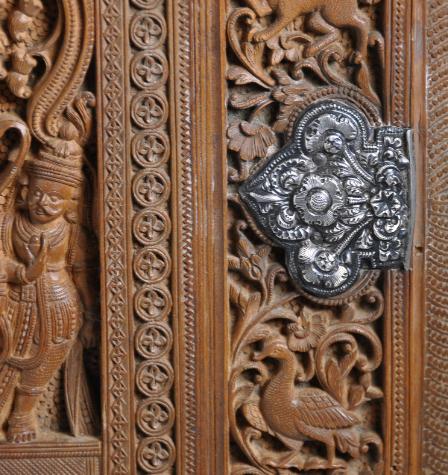
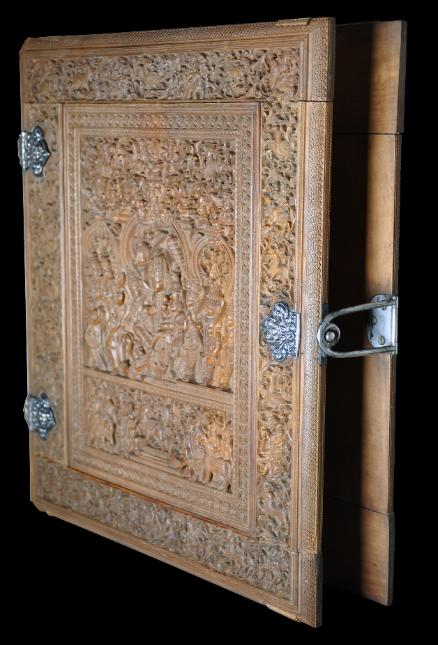
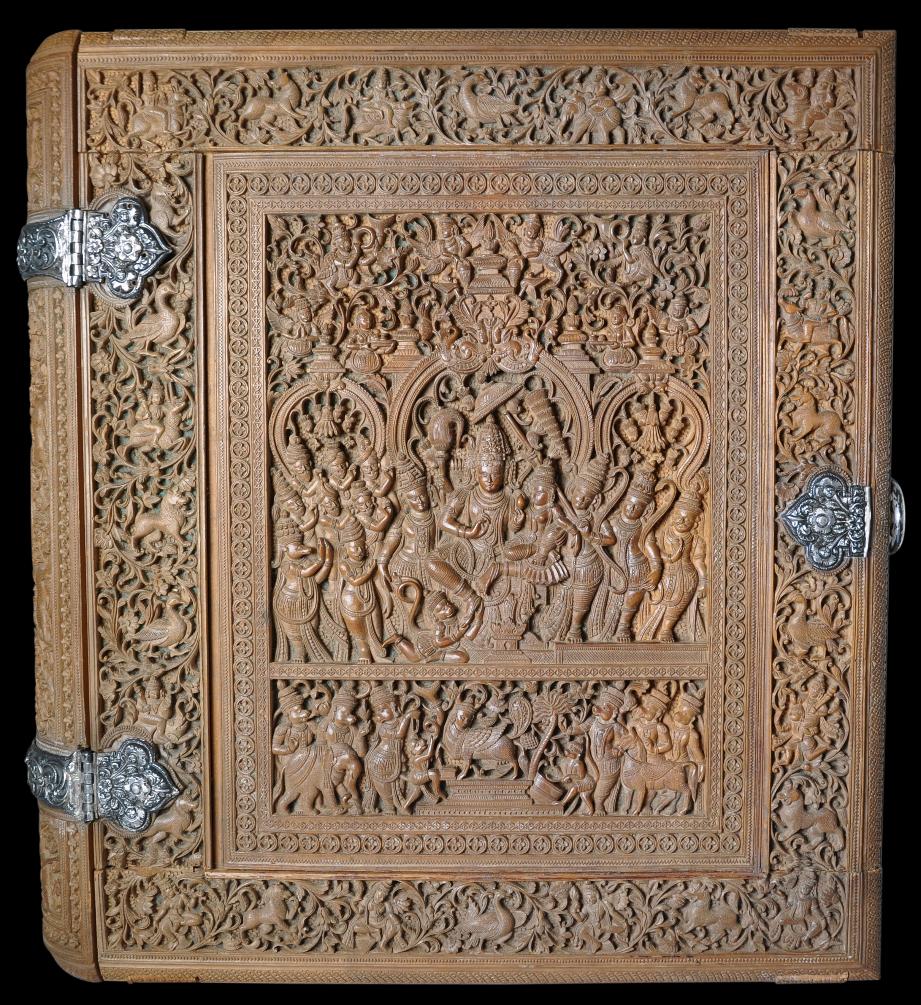

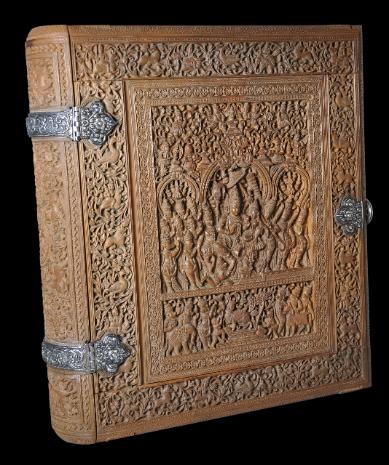
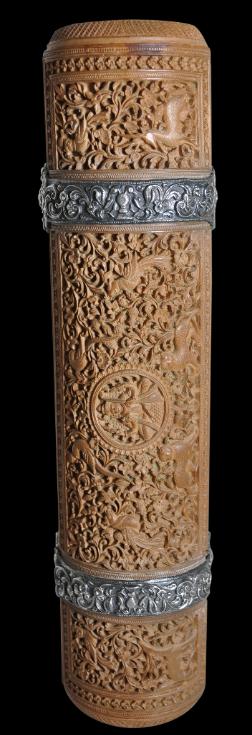
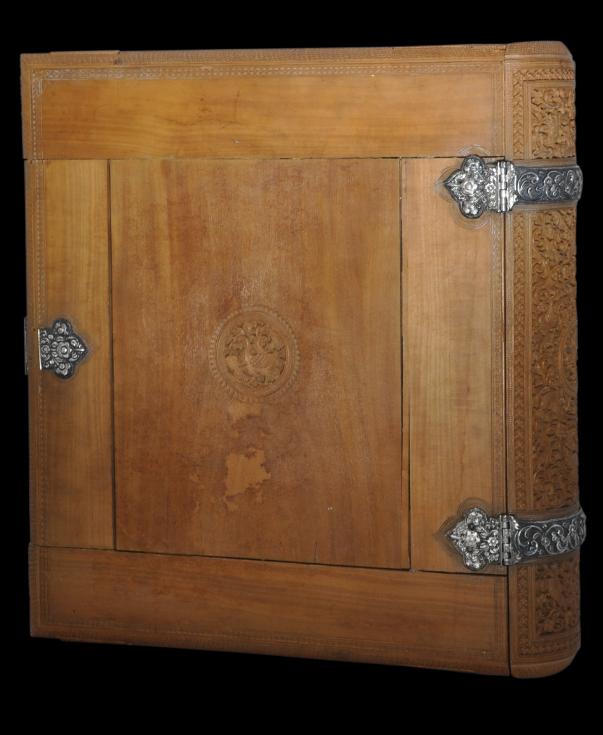

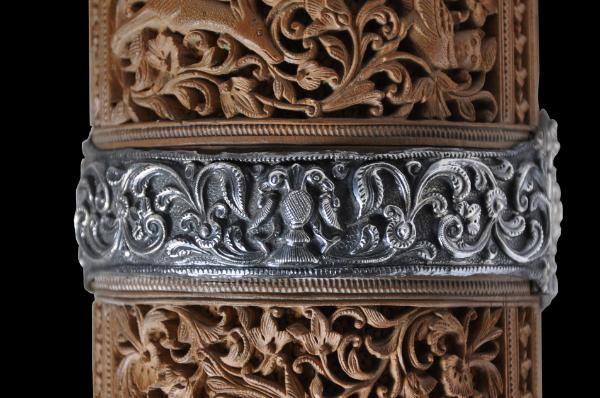
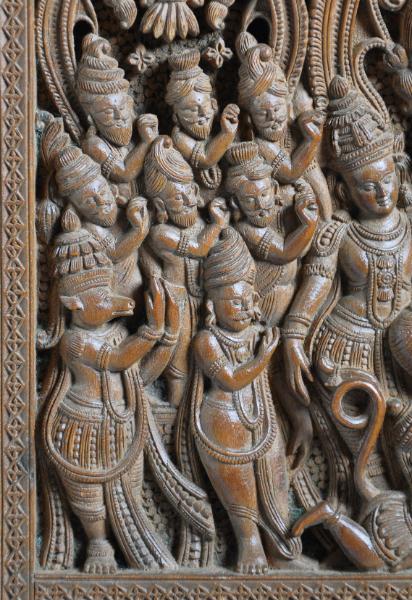
The double-headed eagle (ganda bherunda), the emblem of the Wodiyer Dynasty,
the rulers of Mysore.

